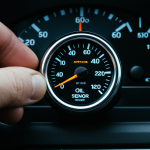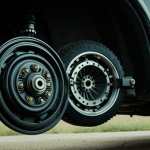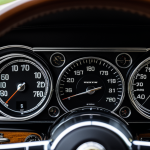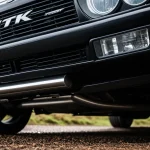Legal Framework for Car Modifications & Drift in the UK
Understanding UK drifting laws and car modification regulations is crucial for enthusiasts aiming to balance performance and legality. In the UK, vehicle modifications for drifting must comply with stringent legal requirements to ensure safety and roadworthiness. Key legislation dictates what alterations can be made without jeopardizing your car’s registration or insurance status.
The UK drifting laws emphasize maintaining original vehicle safety standards while permitting performance enhancements. For example, modifying suspension or adding a limited-slip differential is generally lawful if done within stipulated guidelines. However, overly aggressive changes that compromise safety, such as excessively lowered chassis or unsafe exhaust systems, often conflict with car modification regulations.
Additional reading : Ultimate Guide to Installing Remote Start for UK Vehicles: Stay Warm on Chilly Mornings!
Essential certifications include a valid MOT certificate, proving the drift car still meets safety standards after modifications. Additionally, the Driver and Vehicle Licensing Agency (DVLA) requires accurate documentation of any changes to the vehicle’s specifications to ensure full compliance. Staying up-to-date with recent legislative changes, such as tighter emission standards affecting exhaust modifications, helps you avoid costly fines or invalidation of your vehicle license.
Adhering to these legal requirements supports a smooth drifting experience while safeguarding your rights and responsibilities as a UK driver.
In parallel : The Ultimate Guide to Legally Enhancing Your UK Vehicle with Aftermarket Exhaust Systems
Legal Framework for Car Modifications & Drift in the UK
Understanding the UK drifting laws and car modification regulations is vital for anyone modifying a car for drifting purposes. The legal framework ensures that while enthusiasts enhance their vehicles, they remain compliant with safety and road-use standards. In the UK, any vehicle modifications, especially those intended for drifting, must adhere to strict legal requirements to remain road-legal.
Vehicle modifications for drift cars must comply with regulations set by the Driver and Vehicle Licensing Agency (DVLA) and the Highway Code. Essential legal documents include the vehicle’s V5C registration certificate and a current MOT certificate, demonstrating that the car meets minimum safety standards. When modifications affect emissions or vehicle structure, additional certifications or inspections might be necessary.
Recent legislative changes emphasize stricter control on emissions and noise levels, impacting the legality of certain drift car setups. For instance, exhaust modifications that increase noise beyond legal limits or engine tuning that exceeds emissions standards can render the vehicle illegal for road use.
Navigating UK drifting laws requires a clear grasp of which modifications are permitted and thorough documentation, ensuring both safety and compliance under current car modification regulations.
Required Legal Car Modifications for Drift Performance
Understanding which legal car modifications enhance drift performance without breaching DVLA compliance is essential. UK laws permit adjustments like upgrading the suspension, installing a limited-slip differential, and improving brake systems to aid drifting, provided these changes do not compromise safety or roadworthiness.
Certain modifications are commonly deemed illegal under car modification regulations. For example, exhausts exceeding noise limits or those causing excessive emissions violate UK drifting laws. Likewise, excessively lowering a car or fitting non-standard tyres that affect handling stability can lead to non-compliance issues. To avoid penalties, all upgrades must retain the vehicle’s original safety integrity and conform to emission standards.
Documenting and registering modifications with the DVLA is a legal requirement. This process ensures authorities are aware of changes affecting the vehicle’s identity or performance. Submission of detailed modification records, such as parts used and installation dates, helps maintain full legal compliance. Failure to declare these adjustments can invalidate insurance or MOT certifications, risking fines or prohibition from road use.
Sticking to these legal car modifications guarantees a drift car setup that balances performance with the law, making your drifting experience both thrilling and legitimate.
Legal Framework for Car Modifications & Drift in the UK
Compliance with UK drifting laws and car modification regulations requires thorough understanding of the legal framework governing vehicle modifications. The laws specify which alterations are acceptable while ensuring vehicles remain safe and road-legal. The legal requirements primarily aim to balance performance enhancements with public safety and environmental standards.
To legally modify a drift car, owners must ensure all changes adhere to DVLA rules. This includes accurate documentation of modifications on the Vehicle Registration Certificate (V5C) and obtaining a valid MOT certificate demonstrating compliance with safety standards. Failure to update the DVLA or meet MOT standards can result in fines, insurance invalidation, or vehicle prohibition from public roads.
Recent legislative changes have tightened restrictions on emissions and noise levels, instrumental for drift cars. For instance, alterations that negatively affect exhaust emissions or cause excessive noise breach UK drifting laws and car modification regulations. These changes require owners to choose modifications carefully, prioritizing legal and environmentally safe upgrades.
Maintaining up-to-date knowledge of current legal requirements ensures that drift car enthusiasts stay within the boundaries of the law, avoiding unnecessary legal or financial consequences.
Legal Framework for Car Modifications & Drift in the UK
Navigating UK drifting laws requires understanding the strict car modification regulations that govern vehicle alterations for drift use. Modifications must comply with legal requirements ensuring cars remain roadworthy and safe. Any modification affecting emissions, noise, or vehicle structure falls under precise scrutiny, with non-compliance risking penalties or loss of registration.
Key legal documents include a valid MOT certificate and the vehicle’s V5C registration. These confirm the drift car’s compliance with safety and emissions standards after modifications. The DVLA mandates detailed reporting and approval of changes impacting engine tuning, exhaust systems, or chassis alterations. This ensures authorities monitor adjustments that may affect public road safety.
Recent legislative updates tighten controls on exhaust noise and emissions levels, directly impacting popular drift car modifications. For instance, exhaust upgrades boosting noise beyond permitted decibels or engine remaps failing emissions tests violate car modification regulations. Enthusiasts must stay informed about evolving laws to maintain full compliance.
In summary, strict adherence to the legal requirements of UK drifting laws, including proper documentation and awareness of new regulations, is essential for a legitimate and enjoyable drift car experience.
Legal Framework for Car Modifications & Drift in the UK
The UK drifting laws and car modification regulations establish strict legal requirements to ensure drift vehicles remain safe and road-legal. Any drift car modifications must align with these regulations to avoid legal repercussions and maintain insurance validity.
Crucial legal documents include the vehicle’s V5C registration and a valid MOT certificate. The MOT test verifies that the car meets essential car safety standards even after extensive modifications. Importantly, the DVLA requires owners to declare all significant changes, documenting the specifics to maintain DVLA compliance.
Recent legislative changes have intensified scrutiny on emissions and noise, impacting the choice of exhaust and engine tuning. Modifications that increase noise beyond permitted levels or worsen emissions can lead to MOT failure and invalidate road use permissions. This ensures that while enthusiasts enhance drift performance, they do so within a framework prioritizing public safety and environmental responsibility.
To comply fully, drivers must keep detailed records, update vehicle documentation promptly, and perform modifications aligned with UK drifting laws. Understanding these legal requirements keeps your drift car both competitive and compliant, safeguarding your investment and road privileges.
Legal Framework for Car Modifications & Drift in the UK
Understanding the UK drifting laws begins with recognising how car modification regulations govern alterations to performance vehicles. The legal requirements ensure all modifications maintain safety, environmental standards, and roadworthiness. Drift cars must comply with these frameworks to avoid penalties or invalid insurance.
Central to compliance is adhering to strict guidelines about vehicle structure changes, emissions, and noise levels. The UK drifting laws prohibit modifications that exceed specified limits on exhaust noise or emissions, reflecting recent legislative changes targeting environmental impact. For example, exhaust systems must meet decibel thresholds set by law, and engine tuning must not violate emission standards.
Key legal requirements include holding a valid MOT certificate, confirming the vehicle remains safe after adjustments, and updating the V5C registration with the DVLA to reflect modifications accurately. Failure to report or document changes breaches car modification regulations and risks legal consequences.
Enforcement of this framework safeguards public safety while allowing for legal drift car enhancements. Staying informed about ongoing changes in UK drifting laws is essential. This ensures modifications remain compliant under current legal requirements and that enthusiasts can enjoy drifting without infringement.
Legal Framework for Car Modifications & Drift in the UK
Understanding UK drifting laws and car modification regulations is fundamental for any enthusiast aiming for a compliant drift car. These legal requirements ensure vehicle modifications meet safety, emissions, and noise standards mandated by law. The framework governs what can be altered without jeopardizing road legality or insurance.
Key documents include the vehicle’s V5C registration and a valid MOT certificate, which certify that the drift car satisfies car safety standards after modifications. The DVLA insists on accurate documentation of performance or structural changes, reinforcing compliance and traceability.
Recent legislative changes have sharpened focus on environmental impact. For instance, exhaust modifications that increase noise above regulated decibel levels or cause emission breaches violate UK drifting laws and car modification regulations. These changes restrict common drift alterations like aggressive engine tuning or muffler replacements.
Ensuring adherence to these evolving legal norms protects drivers from fines, insurance voidance, or vehicle prohibitions. By staying informed and documenting modifications, enthusiasts can build a drift car that balances exhilarating performance with strict legal requirements.
Legal Framework for Car Modifications & Drift in the UK
Understanding the UK drifting laws requires a clear grasp of the car modification regulations that govern the legal landscape. These legal requirements ensure that any vehicle alterations for drifting maintain safety, environmental compliance, and roadworthiness.
Fundamental documents include the vehicle’s V5C registration and a current MOT certificate, both essential to demonstrate compliance after modifications. The Driver and Vehicle Licensing Agency (DVLA) mandates reporting any changes affecting performance, emissions, or vehicle structure to prevent legal issues.
Recent legislative changes have increased scrutiny on exhaust noise levels and emissions standards. For example, modifications that increase exhaust decibels beyond the legal limit or lead to elevated pollutant emissions are prohibited under current UK drifting laws. These updates underscore the importance of selecting modifications aligned with both environmental and safety standards.
Enforcement of these car modification regulations promotes responsible drifting by requiring owners to maintain full documentation and conformity to evolving laws. Being proactive in understanding the latest legal requirements secures a compliant and enjoyable drift car experience in the UK.
Legal Framework for Car Modifications & Drift in the UK
Within the UK drifting laws and car modification regulations, compliance begins by understanding the strict legal requirements that govern what alterations are permitted on drift vehicles. UK legislation mandates that any modifications must retain the vehicle’s roadworthiness, safety features, and environmental standards. This means changes affecting emissions, noise levels, and structural integrity are heavily scrutinized.
Essential legal documentation includes a current MOT certificate and the V5C registration document, both of which must reflect the vehicle’s post-modification status. The MOT test certifies the drift car meets required car safety standards despite performance upgrades. Failure to maintain these certifications risks invalidating insurance and may lead to fines or prohibition from road use.
Recent legislative changes have reinforced restrictions, particularly targeting exhaust noise and emissions. For example, modifications that boost exhaust decibels above legal limits or cause emission violations breach car modification regulations under the latest UK laws. This intensifies the importance of selecting parts and tuning strategies aligned with current legal requirements.
Understanding and adhering to these frameworks ensures drift enthusiasts maintain compliance while optimising their vehicle within the prescribed boundaries of UK drifting laws.
Legal Framework for Car Modifications & Drift in the UK
Understanding UK drifting laws is vital because they set clear parameters for car modification regulations to ensure safety, legality, and environmental compliance. These legal requirements govern the entire modification process, making it essential for drift enthusiasts to follow them closely.
At the core of the framework are mandatory documents like the V5C registration certificate and a valid MOT, both proving the car’s roadworthiness after modifications. The DVLA requires all significant changes affecting vehicle performance, emissions, or structure to be accurately recorded and approved. This prevents illegal modifications from evading regulatory scrutiny.
Recent legislative updates focus heavily on noise and emission controls. For example, exhaust modifications that exceed legal noise limits or engine tuning adjustments that increase emissions beyond authorized thresholds violate car modification regulations and UK drifting laws. This means popular drift upgrades must be carefully selected to comply with these stricter rules.
Adhering to these legal requirements is not just a bureaucratic obligation but a way to promote responsible drifting that respects public safety and environmental standards in the UK. Staying informed ensures all modifications remain within the law, preventing penalties or loss of insurance coverage.










